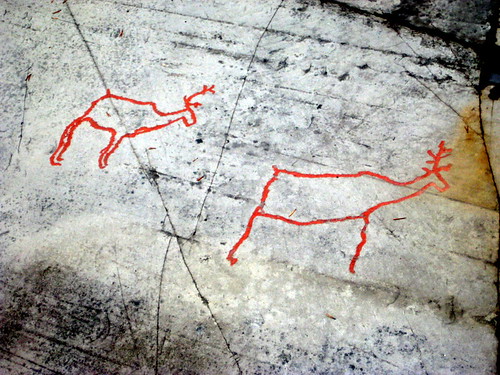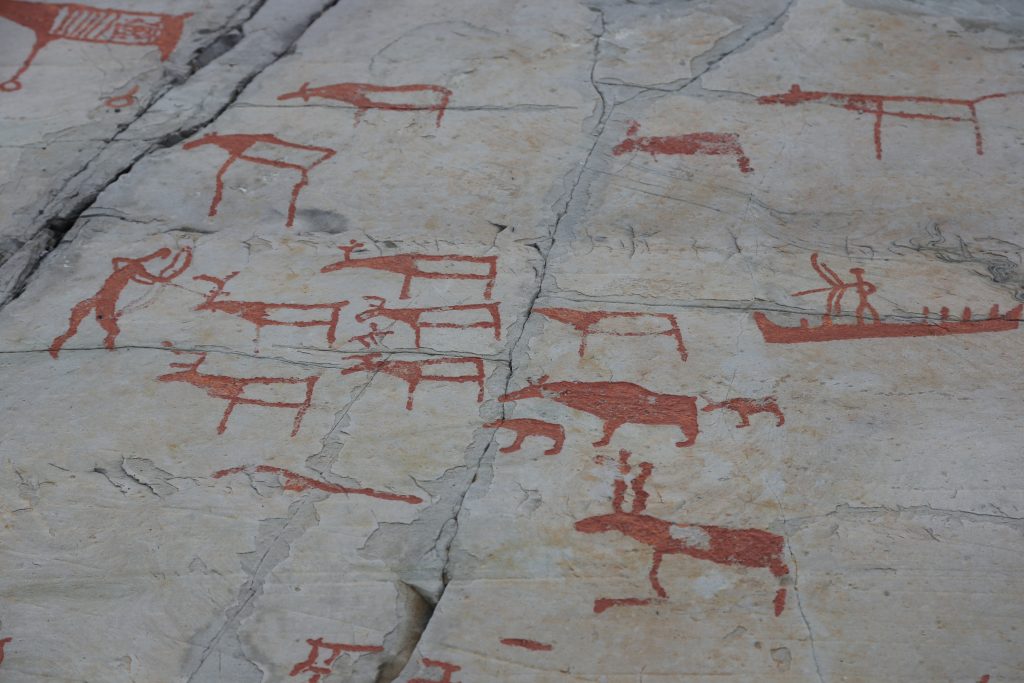Nestled near the Arctic Circle, the Rock Art of Alta in the Alta Fjord of Norway stands as a testament to the lives and cultures of prehistoric hunter-gatherer societies. Dating back to approximately 4200 to 500 B.C., these petroglyphs offer a window into the past, shedding light on the environment, human activities, and social interactions of ancient civilizations on the fringes of the Far North.
A Tapestry of Petroglyphs: Exploring the Sites
The Rock Art of Alta comprises thousands of paintings and engravings spread across 45 sites in five different areas along the Alta Fjord. These intricate carvings and paintings depict a wide range of motifs, including human figures, animals, hunting scenes, rituals, and social gatherings. The diverse imagery provides valuable insights into the cosmology, beliefs, and daily lives of prehistoric communities in the Arctic region.
Understanding the Landscape: Context and Significance
The development of carvings in Alta over thousands of years is closely linked to the post-glacial land upheaval, offering clues to the changing landscape and chronology of rock art in the circumpolar region. The panels not only showcase communication between the living and spiritual worlds but also highlight the interaction between hunter-gatherers and their natural environment. Scenes of hunting, fishing, boat journeys, and wildlife capture the symbiotic relationship between humans and the landscape.

Cultural and Scientific Significance: UNESCO Recognition
Designated as a UNESCO World Heritage Site, the Rock Art of Alta holds exceptional universal value, reflecting the artistic prowess and cultural heritage of ancient societies. It serves as an invaluable resource for researchers studying prehistoric life, providing insights into social structures, artistic traditions, and technological advancements of the past.
Preserving Integrity and Authenticity: Challenges and Solutions
Maintaining the integrity and authenticity of the Rock Art of Alta is paramount to safeguarding its rich heritage. Threats such as natural erosion, vegetation growth, and vandalism pose significant challenges to the preservation efforts. To mitigate these risks, protective measures such as wooden walkways, platforms, and cleaning techniques have been implemented. Additionally, close monitoring and collaboration among cultural heritage authorities, local communities, and researchers are essential for ensuring the long-term conservation of these ancient treasures.

Management and Conservation: A Collaborative Approach
Effective protection and management of the Rock Art of Alta rely on a comprehensive framework established by the Norwegian Cultural Heritage Act. The Alta Museum plays a pivotal role in day-to-day management, facilitating education, monitoring, and maintenance activities. Through ongoing research, documentation, and community engagement, efforts are underway to safeguard this invaluable cultural legacy for future generations.
Embracing the Past, Shaping the Future
In conclusion, the Rock Art of Alta stands as a poignant reminder of humanity’s enduring connection to the natural world and the rich tapestry of cultures that have flourished in the Arctic landscape. As custodians of this ancient legacy, we must strive to protect, preserve, and celebrate these extraordinary expressions of human creativity and ingenuity, ensuring that they continue to inspire and educate generations to come.
Read in Rachona: The Rock Art of Alta: Preserving the Cultural Legacy


